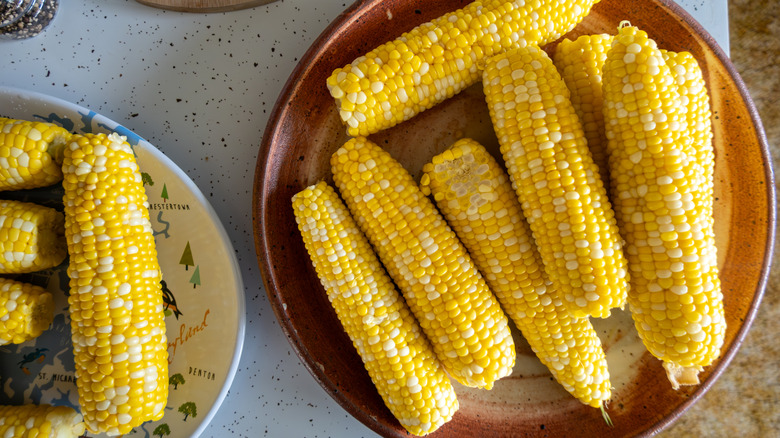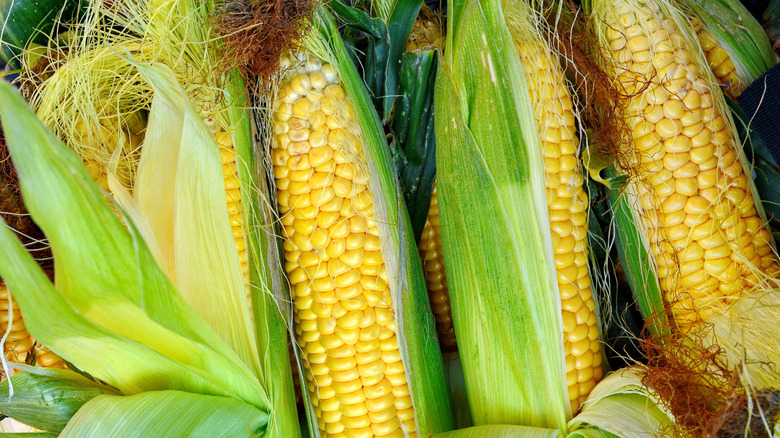Here's How You'll Know Your Corn On The Cob Has Gone Bad
Corn is a United States icon; the U.S. is both the largest producer and consumer of corn in the entire world. Now that we've established that corn is good, you should also know how to tell when corn is bad — specifically, corn on the cob. Unshucked corn often stays hidden away behind its green leaves for days after purchase, and by the time you get around to cooking it, you might wonder if it's safe. Even if you picked out the best corn possible with the silk test at the store, it doesn't last forever. Another test you should try before cooking it is a sniff test.
If your corn has a rancid odor, don't take any chances. It's best to toss it in the compost. Other signs your corn is bad include if it's slimy, mushy, or has visible mold. All of these should be unsettling enough to realize the corn is bad, but just in case you didn't know, now you do. Of course, there are some weird instances in which it seems like the corn on the cob could be bad, but it isn't. If your corn is missing a kernel here and there, or a whole bunch of kernels in one spot, that's okay. It likely happened in the growth process, and it's still good to eat. A more unsettling occurrence that may make you question eating your corn on the cob is if you find a worm. Yes, an actual worm. This could be a corn earworm, and if you'd like, you can remove it and cut off the part of the corn it was eating so that you can eat the rest. Of course, it's understandable if you'd just rather grab a new ear of corn altogether after that one.
How to make your corn on the cob last longer
To make your corn last longer, it's best to start by buying the freshest corn. Corn eaten closest to the time it was harvested is best, as it's fresh, and the fresher the corn, the sweeter the taste and the longer you have to enjoy it. Good ears of corn will be firm and not mushy, and will still have a vibrant green husk around them. If you notice some browning on the top, it's still okay to purchase, but avoid corn with completely dried-out silk. Corn on the cob is a food that's best purchased on the day you intend to cook it, so if you do your grocery shopping once a week to save money, include corn in your day one meal plan.
If you do need to store your corn on the cob, make sure to avoid any food storage mistakes. Corn that still has the husk around it can be stored in your crisper drawer and kept for up to two days before you need to either cook it or toss it. If you've already shucked the corn, store it in an airtight bag. You can also remove the husk and blanch corn on the cob to freeze it for eight to twelve months.

